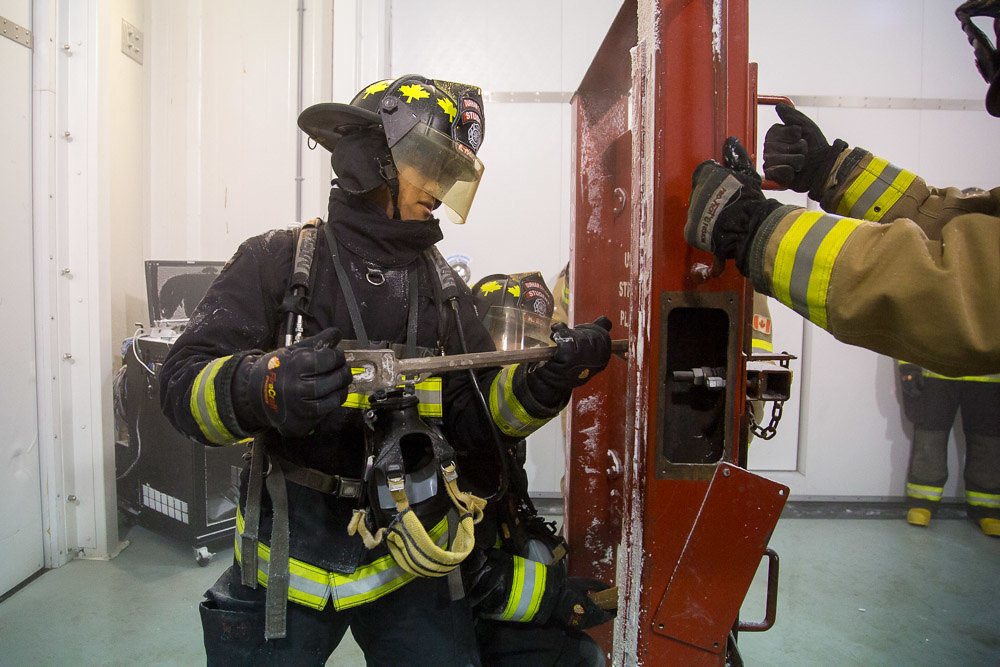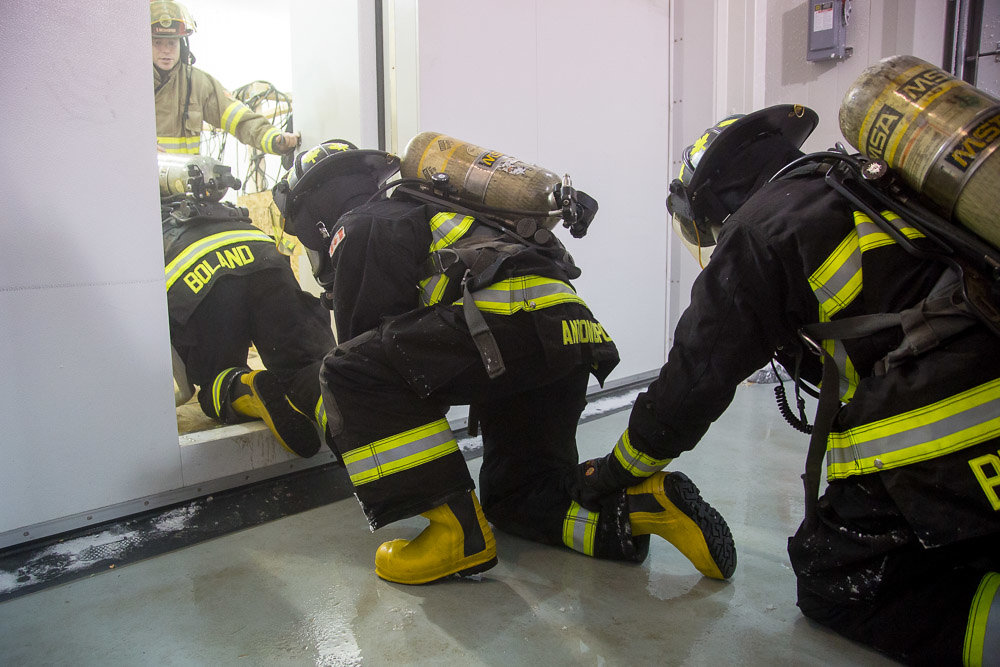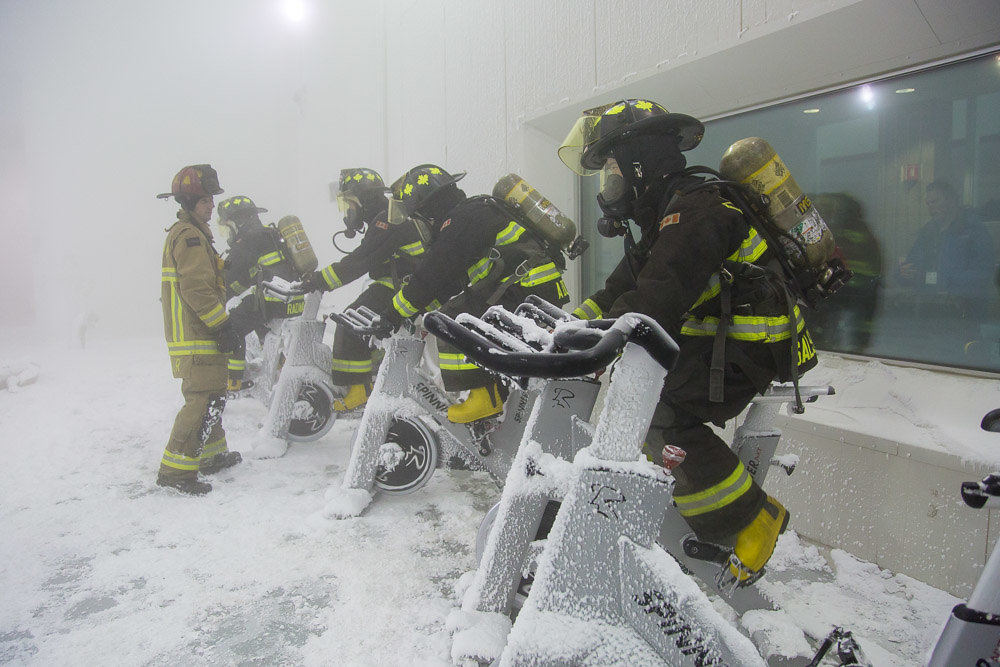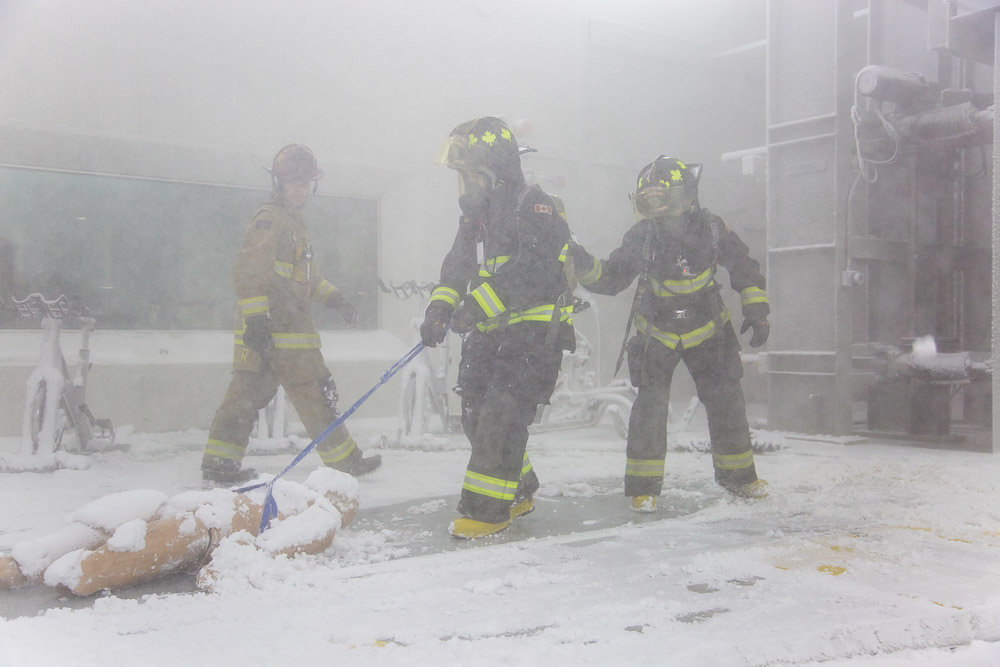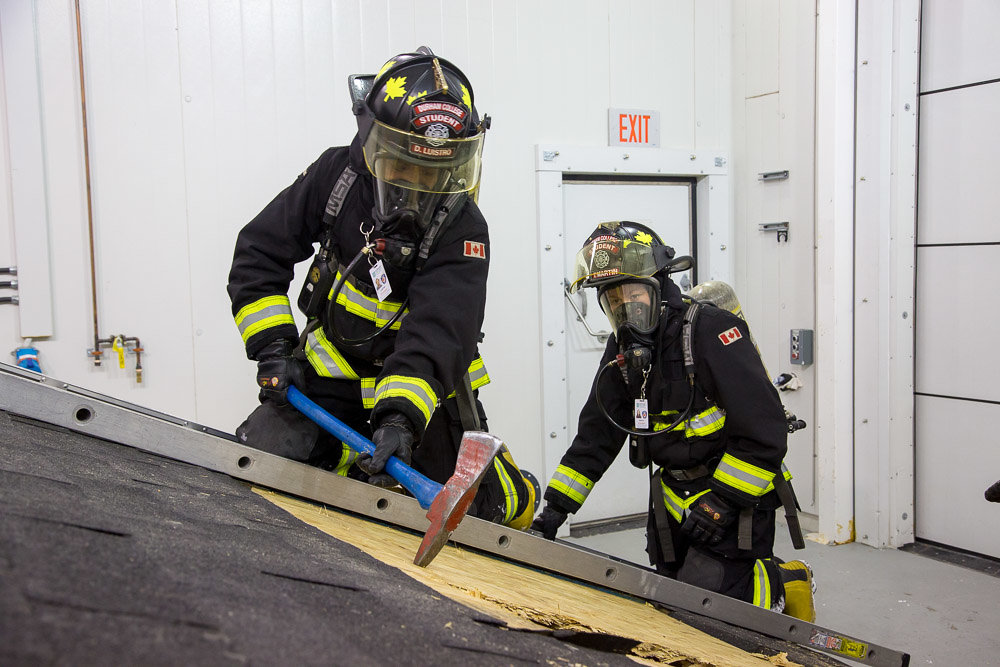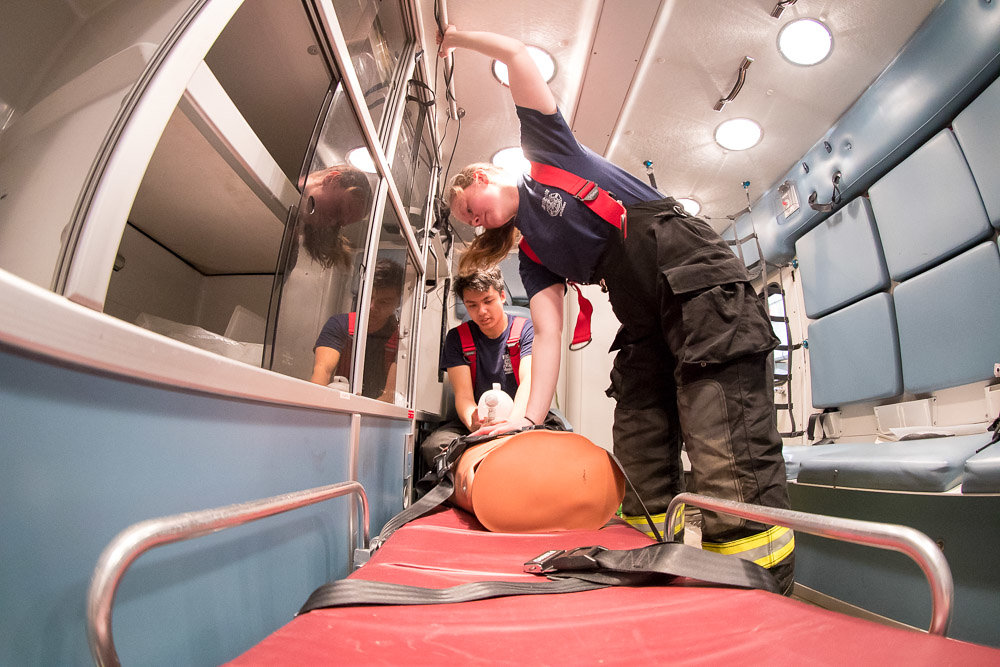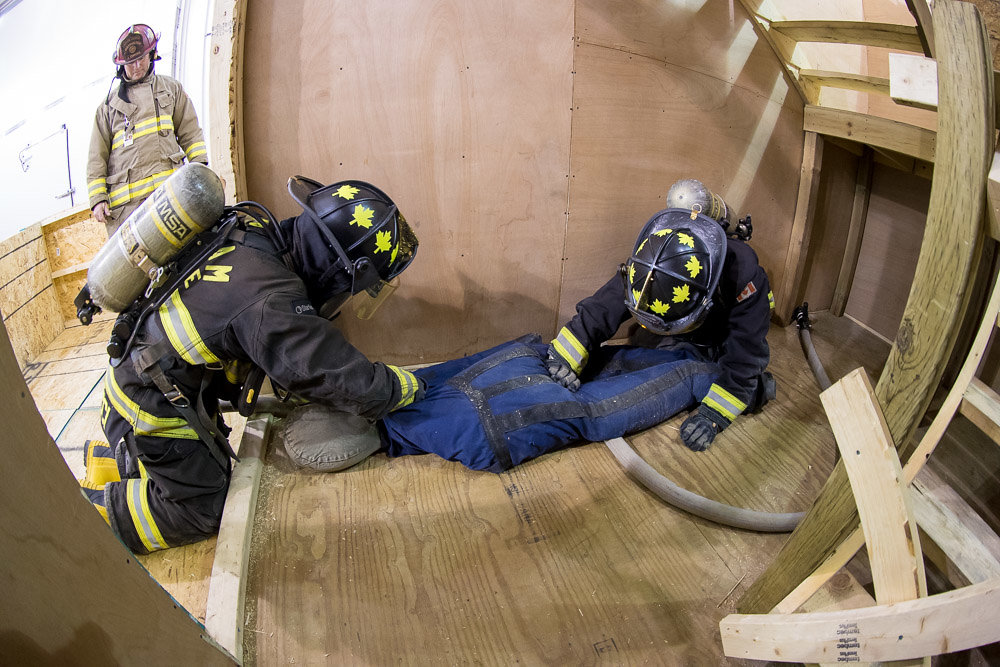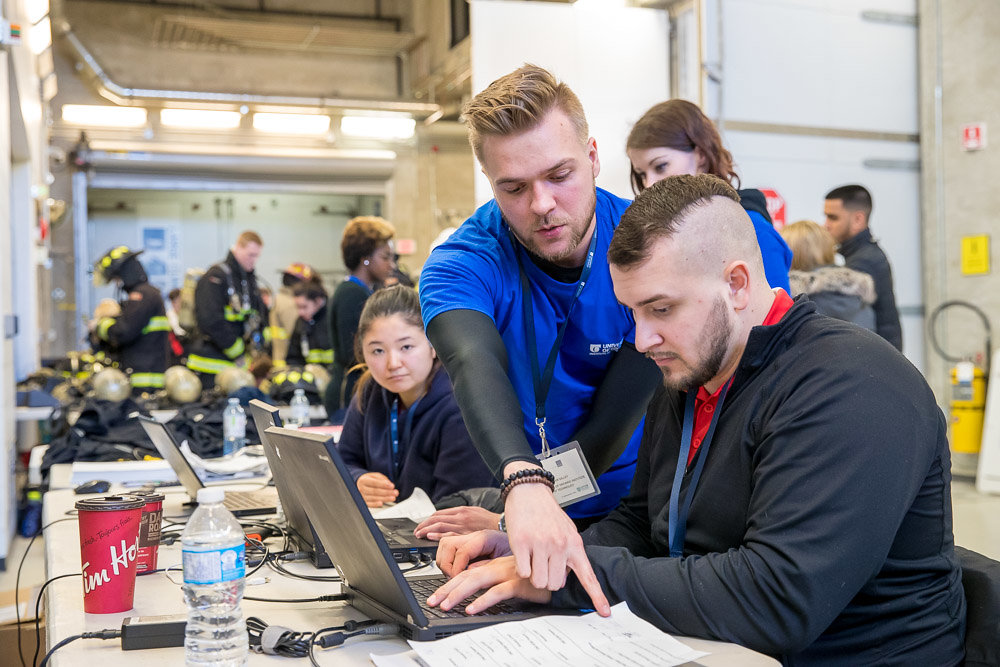Future firefighters put to the test in ACE Environmental Stress Workshop
June 23, 2017
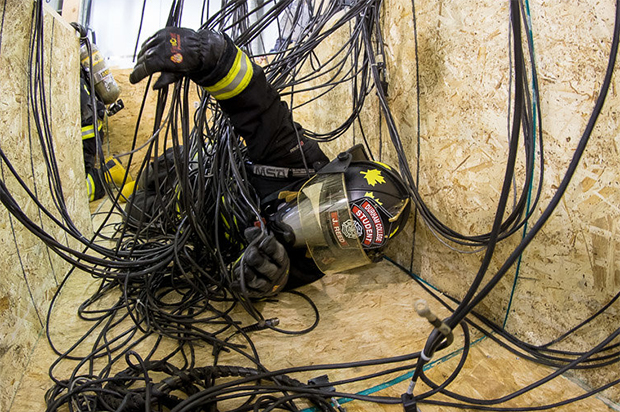
Bone-chilling blizzards, scorching hot temperatures and an ambulance ride bumpier than a rickety roller coaster: most people would not want to find themselves in any of these situations. But for firefighters, they’re the norm.
The ACE Climatic Wind Tunnel (CWT) at the University of Ontario Institute of Technology is a one-of-a-kind testing facility that recreates some of the most extreme weather conditions imaginable. Whatever–or whoever–enters the CWT faces the most stringent of assessments.
On April 7, ACE welcomed close to 100 students from Durham College’s (DC) Firefighter: Pre-service, Education and Training (PFET) program for a no-holds-barred Firefighter Environmental Stress Workshop, which teaches firefighters how their bodies and minds react in different types of stressful environmental situations, and measures their performance.
“The goal is to teach participants methods to improve performance, both physically and cognitively, to ensure they perform at the highest level during real emergencies,” explains Colin Howard, Marketing Specialist and Account Manager, ACE.
Students tackled a variety of simulations. One was an ambulance training simulation that recreated the worst drive to the emergency room imaginable, while students inside the vehicle perform emergency CPR. They also navigated through an elaborate heat-stress maze in full self-contained breathing apparatus (SCBA) gear, completely blinded by their masks, past a vast assortment of wires that threatened to entangle them―all while dragging a 57-kilogram (125-pound) mannequin to safety.
“It ties in everything we taught and puts it into practice,” says Rick Bowler, PFET Instructor.
Students also practiced forced-entry techniques and various exercises in extreme cold conditions.
“Each evolution is designed to replicate a real-life scenario a firefighter working in Ontario would be expected to handle,” says Dr. Michael Williams-Bell, UOIT alumnus (PhD in Applied Bioscience, class of 2016), Adjunct Professor in the university’s Faculty of Health Sciences, and Professor in Durham College’s School of Health and Community Services. “The experience is really eye-opening for all of them.”
The course tests the students, but it also teaches them the importance of relying on others in each student’s ‘squad’.
“You’ve got to keep calm,” says PFET Instructor Corey Alavar. “You learn to recognize when to call mayday when you’re in trouble―like when you run out of air.”
Besides the firefighter students, a group of students from the university (third- and fourth-year Kinesiology undergraduates, and Master of Science in Kinesiology candidates) and the college (first- and second-year Fitness and Health Promotion students) were on site collecting data. They tracked the firefighter students’ vitals through Hexoskin monitors: tight shirts with multiple sensors worn under firefighting gear. The Hexoskins gather respiratory and heart-rate information, and show how students respond to different stresses and workloads. The results are reflected in a personalized ‘report card’ that indicates any physiological issues the student needs to address.
The unique experience ACE provides for the firefighter students helps make them more employable across Canada.
“The testing was based on current training requirements for firefighters and first responders,” says Justin Gammage, Industry Liaison Manager, ACE. “No one else has done this to this extent, as far as we know, so this is new and exciting. We’re continuing to expand on the workshop and hold it at least once a year; we want to open this up to all firefighter programs in Ontario.”
The workshop was funded through the Innovative Initiatives Fund, a joint UOIT and DC campus fund supporting projects that help advance the student experience.
PFET student testimonial:
“As students, we weren’t just thrown into these challenges without any help or assistance. Many instructors were on site to facilitate the process and provide guidance. The instructors really helped us keep up with the challenges as they came one right after another.”
8 > 1